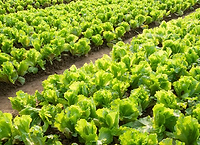Source: The Californian
In the wake of a recent lawsuit against a Salinas Valley grower alleging responsibility for an E. coli-related death, and an ongoing outbreak of sickness caused by a parasite found in bagged salad from a facility operated by a Taylor Farms subsidiary in Mexico, growers are under increasing pressure to extend animal buffer zones around their crops.
That, say wildlife advocates, is unnecessary and is harming the environment.
Animal feces – from any number of wild or domestic animals – worry growers because of the pathogens that can be introduced into their crops, including a deadly strain of escherichia coli bacteria – E. coli. Wildlife interests, meanwhile, say that increasing buffer zones and fencing are infringing on key habitat and are not founded upon any sound science.
“Fruit and vegetable farmers report being pressured by commercial produce buyers to engage in land-use practices that are not conducive to wildlife and habitat conservation, in a scientifically questionable attempt to reduce food-borne illness risk,” wrote Sasha Gennet with The Nature Conservancy and the lead author of a study published in Frontiers in Ecology and the Environment, the journal of the Ecological Society of America.
The researchers observed habitat changes in the Salinas Valley between 2005 and 2009, and found that 13.3 percent converted land use to bare ground buffer zones. Ubiquitous fencing also interfered with wildlife migration corridors.
With the writing of the Leafy Greens Marketing Agreement in 2006 and 2007 following a deadly outbreak of E. coli on spinach, a 30-foot buffer zone of open space was established around crops. Why 30 feet?
“Mostly because it already existed in a lot of cases,” said Mary Cisghke, the director of the Salinas-based Leafy Greens Research Program. “It was the room needed to turn a tractor around.”
Get our eMagazine delivered directly to your inbox
Stay in the know on the latest science-based solutions for food safety.
SUBSCRIBE TODAY!Copyright ©2024. All Rights Reserved BNP Media.
Design, CMS, Hosting & Web Development :: ePublishing



